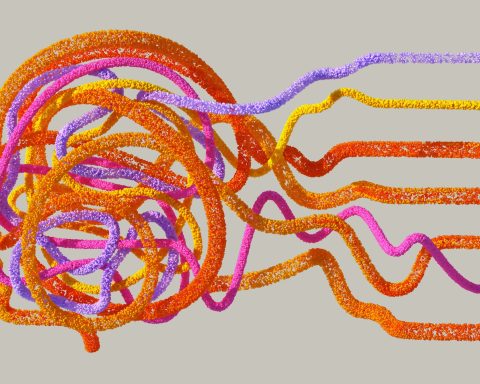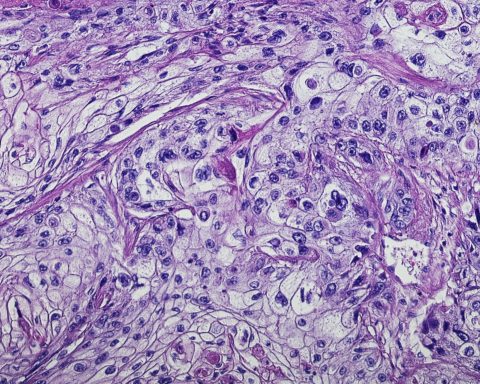 Nathaniel Roocroft is a Royal Navy GP trainee in North Yorkshire.
Nathaniel Roocroft is a Royal Navy GP trainee in North Yorkshire.
The kaleidoscope of care has been undeniably shaken over recent years. We live in a growing and ageing society, with an increasing total burden of ill-health.1 Due in part to the success of many medical advances, we paradoxically now need more health care than ever before. Successive governments have reacted with an increase in health spending,2 however money by itself is no magic bullet.
The rise of technology has dramatically shifted how health care is consumed, and the COVID-19 pandemic has further accelerated this shift. As a result of all this change over a relatively short period of time, the patient–GP relationship is currently suffering from ‘future shock’; described as the distress suffered when unable to cope with the rapidity of social and technological change.3
From the outside, this situation looks bleak. However, a more optimistic view has been germinating for several years, as a solution for these challenges is sought. Written before the pandemic could influence opinion, the Royal College of General Practitioners (RCGP) built on earlier work by The King’s Fund to design their own ‘future vision’ of primary health care. This vision declared that ‘the delivery of relationship-based, whole-person care will be at the heart of general practice’.1
Due in part to the success of many medical advances, we paradoxically now need more health care than ever before.
Despite the turmoil and change, the RCGP found patients were not harking back to a mythical golden age of general practice. Patients wanted to be treated as individuals, working with their GPs as equal partners in a joined-up healthcare system. They wanted to be better able to look after themselves before needing to see a GP, reducing their risk of serious health problems. When they do eventually need to consult, they wished for flexibility in how and when they see a doctor, while at the same time being able to trust in any technology used in their care.1
These requests align with the ‘five key attributes’ that The King’s Fund felt underpinned the future of general practice: person-centred, holistic care; access; co-ordination; continuity; and community focus.4 Doctors and patients seem to be on the same wavelength.
As change looms large for the NHS, the future of primary health care will crystallise around these attributes and as a result the patient–GP relationship will be transformed.
Creating space for proactive health care
There have been wide-ranging changes in society since the birth of the NHS. These changes have not been reflected in the way GPs interact with their patients. A one-size-fits-all model of 10 minutes to cover any aspect of health, held largely during the traditional working week, reigns supreme. The working-age patient with an acute problem is faced with the same system as the retired individual with a longstanding chronic illness. Neither group is served as effectively as would be hoped.
GPs must also juggle both the reactive and proactive aspects of health care for each patient during a consultation. This causes a duality of competing demands. With an acute presentation often taking priority, there is frequently not enough time left over to discuss the bigger picture of a patient’s long-term health.
The rise of technology has dramatically shifted how health care is consumed …
Possible solutions involve giving ‘more choice over the length, time and method of consultation’, with more time ‘to care for those patients with the most complex needs’.1 GPs will potentially deliver care ‘across the traditional organisational boundaries between hospitals, primary care and social care’,1 with ‘enhanced access to appointments in the evenings and at weekends’.1
The patient–GP relationship is likely to become increasingly divergent to deliver these objectives. General practice could separate into managing the reactive in one sphere and the proactive in another entirely. For many patients, this would allow the crucial swing from a focus on reactive disease care to proactive health care.
In our always-on, same-day society, a move towards GP polycentres to manage reactive issues will become the norm. Available around the clock to deal with acute complaints when required, patients will embrace shorter appointments with different clinicians as a reasonable trade-off for convenience.
This will allow renewed focus in the traditional GP setting on a more proactive relationship. The emphasis here will be on longer appointments, with increased continuity and a ‘named GP, accountable for their care’.1 Greater consultation time will allow for more meaningful conversations. More holistic care will result. GPs will not only be able to better manage the complexities of care that arise from juggling multimorbidity and polypharmacy, but also have time in each consultation to properly engage with patients regarding their lifestyle.
With no requirement to firefight reactive issues, mandatory intervals between appointments could be jointly determined by the GP and patient. This will promote appropriate use of services and create an environment in which patients are motivated to take control of their own health in between consultations.
General practice could separate into managing the reactive in one sphere and the proactive in another entirely.
Empowering the patient in the information age
Patients will take more responsibility for their own health care. While doctors continue to guide the patient through the consultation itself, there will be an increased emphasis on personal preparation beforehand. The GP will adopt a role comparable to an airline pilot, expertly navigating patients to their destination. Patients will play the part akin to a dutiful traveller, readily accepting the responsibility to pack their luggage and remember their passport prior to boarding.
This preparation will focus on providing up-to-date health metrics for the benefit of the clinician. The old and infirm of tomorrow are the technophile young of today. Over the coming years there will be an expansion of the ‘internet of things’; linking wearable electronic gadgets with smartphone apps and patient-held digital records.1 This technological leap will allow comprehensive data to be synchronised ahead of a consultation. The entire process could even be gamified; with the future consultation potentially unlocked and bookable after the required pre-appointment preparation is complete.
Over time, patients will gain increasing confidence in understanding the data they remotely create. This could result in the monitoring of chronic disease shifting increasingly out of the doctor’s office, and the patient–GP relationship itself, as patients take greater control over their health in their own home.
This biotech revolution could be matched by a new emphasis on educating patients how to prepare for an upcoming appointment. Communication within the consultation is bilateral, yet at present consultation skills reside solely within the domain of the GP. Future patients could be taught how to prepare their symptom history and ideas, concerns, and expectations beforehand. Encouraging the patient to consider their current health priorities in advance will enable a meeting of two experts. Consultations will hit the ground running.
The GP will adopt a role comparable to an airline pilot, expertly navigating patients to their destination.
The shift from gatekeeper to navigator
Greater empowerment for the patient will accelerate the transition of the GP from the gatekeeper of care to its navigator. While patients increasingly become the architects of their own health, they will see their GP as a single-point-of-contact for expert guidance through the increasingly complex healthcare landscape. This patient-centred, doctor-guided care will define the future relationship.
In a future healthcare system with more diverse resources, greater responsibility is likely to be delegated to other members of the healthcare team. Despite this, it will be vital for the GP to continue to understand the breadth of local services and support on offer, and then be able to guide the patient down the relevant pathway depending on their needs. The GP will have a holistic knowledge of the healthcare choices available, to match their holistic knowledge of the patient. These choices will not only include the wider services available within the NHS and voluntary sector, but the ever-expanding frontier of online support services.
An increasing number of unreliable websites and digital apps currently create a vast Wild West of health advice. The future relationship will see the GP, as an expert in digital health resources, confidently discussing the most appropriate with the patient. A national, up-to-date, gold-standard list of quality weblinks and patient information literature could assist GPs with this task.
Developing the true expert in risk management
Scottish philosopher David Hume’s observation that ‘Tis impossible to separate the chance of good from the risk of ill’ lies at the heart of decision making in general practice.5 Longer consultations will enable meaningful discussions about the risks and benefits of health care. Alongside an empowered patient, this will lay the foundation for shared decision making to ‘be the norm’.1
With hundreds of thousands of new medical papers published each year,6 and clinical guidelines frequently updated, GPs may struggle to keep up with the latest research by themselves. To combat this, better technology will result in the development of improved risk-assessment tools available within the consultation.
… patient-centred, doctor-guided care will define the future [patient–GP] relationship.
This advance in objective analysis will create a stronger foundation on which to discuss the subjective side of risk. It will allow patients to discuss healthcare options in the context of their overall health and what really matters to them. A renewed emphasis on improving the communication of risk in the GP curriculum is one important change to support this.
These bespoke assessments will individualise care and provide a third way between the currently competing ‘population’ and ‘high risk’ approaches to preventative health care.7 A better balance will be found between a universal approach, aimed at lowering the average risk in the whole population, and targeting intervention specifically at those individuals with the greatest risk factors.
Consider the impact on the management of chronic health issues, such as raised cholesterol. Once the individual risks and benefits of commonly prescribed medications such as statins are properly explained, a shift to prevention through lifestyle changes could be triggered for many patients. This approach could potentially result in fewer prescriptions, less monitoring, and reduced health demand in the longer term.
Nudging the patient towards better health
GPs are not neutral with regards to patient decision making. Despite the future relationship being one of partnership, GPs will still have a strong interest in promoting choices that are beneficial for health. The application of behavioural economics will be utilised to a greater extent within primary care. This field seeks to understand the factors that truly influence patients in their decision making, as opposed to what the clinician may assume to be the case.8
Through partnership rather than paternalism, the future patient–GP relationship will embrace the change of the world yet to come.
Based on these factors, evidence-based ’nudges’ allow information to be presented in a more deliberate and impactful way. Adopting the use of nudging within future consultations will support and enhance holistic care. GPs will be better at discussing options through the lens of the impact on the whole patient and their wider life, and not solely related to the direct relationship to health. The key to making this an ethically acceptable part of the future patient–GP relationship is ensuring individuals are well informed and ‘the nudges are true nudges, where a decision-maker is free to choose otherwise’.8
Considering the ethics of risk management, an understanding of behavioural economics would also see GPs become better at recognising when they are framing data in a biased way, leading to a more balanced presentation of information.
The widespread adoption of behavioural economics would invigorate the approach to common healthcare problems. It would de-anaesthetise the familiar. The language used within a consultation would increase in value, and as such it would constitute an important part of a GP’s future toolbox. It might even revitalise the notion among patients in the ‘doctor as a drug’.9
Conclusion
Roman Emperor Marcus Aurelius once meditated that ‘the universe is change. Life is opinion’.10 While speculation regarding the future can only be partially evidence based, it is fascinating to consider the possibilities of the patient–GP relationship of tomorrow.
The changes over the coming decades will see the one-size-fits-all model jettisoned. This will allow the core patient–GP relationship to move upstream and focus on proactive, preventative care. Patients will take increasing responsibility as doctors navigate the path towards better health. The ‘roaring current of change’3 in the way society uses information will be embraced before, during, and after a consultation. In addition to improving decision making through technology, doctors will utilise behavioural economics to influence positive changes in health.
Through partnership rather than paternalism, the future patient–GP relationship will embrace the change of the world yet to come. At the same time, it will protect and develop the human connection at the heart of general practice. As Carl Jung so aptly summarised ‘Know all the theories, master all the techniques, but as you touch a human soul be just another human soul’.11
References
1. Royal College of General Practitioners. Fit for the future: a vision for general practice. 2019. https://www.rcgp.org.uk/policy/fit-for-the-future.aspx (accessed 24 Mar 2022).
2. Andrews K. Hospital pass: the NHS is on life support. The Spectator 2021; 4 Dec: https://www.spectator.co.uk/article/hospital-pass-the-nhs-is-on-life-support (accessed 24 Mar 2022).
3. Toffler A. Future shock. New York, NY: Random House, 1970.
4. Baird B, Ross S, Honeyman M, et al. Innovative models of general practice. 2018. https://www.kingsfund.org.uk/publications/innovative-models-general-practice (accessed 24 Mar 2022).
5. Le Fanu J. Too many pills: how too much medicine is endangering our health and what we can do about it. London: Little, Brown, 2018.
6. Druss BG, Marcus SC. Growth and decentralization of the medical literature: implications for evidence-based medicine. J Med Libr Assoc 2005; 93(4): 499–501.
7. Rose G. Sick individuals and sick populations. Int J Epidemiol 1985; 14(1): 32–38.
8. Courtney MR, Spivey C, Daniel KM. Helping patients make better decisions: how to apply behavioral economics in clinical practice. Patient Prefer Adherence 2014; 8: 1503–1512.
9. Balint M. The doctor, his patient, and the illness. Lancet 1955; 268(6866): 683–688.
10. Holiday R, Hanselman S. The daily stoic: 366 meditations on wisdom, perseverance and the art of living. London: Profile Books, 2016.
11. Jung CG. C. G. Jung quote. https://readsworth.com/c-g-jung-quote-228 (accessed 24 Mar 2022).
Featured photo by Hannah Busing on Unsplash.







This is so promising in many ways, yet fatally flawed. It relies, early in the essay, on dividing general practice into two parts: acute presentations and chronic disease management, then focuses entirely on the latter.
Here the GP will enjoy calm, controlled, pre-planned reviews with patients with chronic conditions (which actually our practice nurses do much of, supported by us when there’s complexity or indecision).
Acute presentations have been hived off to ‘polyclinics’ where patients will see unknown clinicians as the price for ready access. The problem with this is that GP continuity of care crucially matters in the acute setting. I think the author is imagining the acute setting as filled with self-limiting sore throats and simple cystitis. This is actually where our patients with complex chronic diseases pitch up with their acute decompensations or new pathologies that need holistic management, to say nothing of our health-anxious, or those whose backstories hugely colour their presentations. If we’re sitting in our comfy CDM towers working on an advance bookable basis only, we aren’t there to bring our personal expertise to bear.
Solving the conundrum between swift access and continuity of care is the challenge de nos jours. Simply consigning a large chunk of general practice to an anonymous ‘polyclinic’ elsewhere is not the answer.